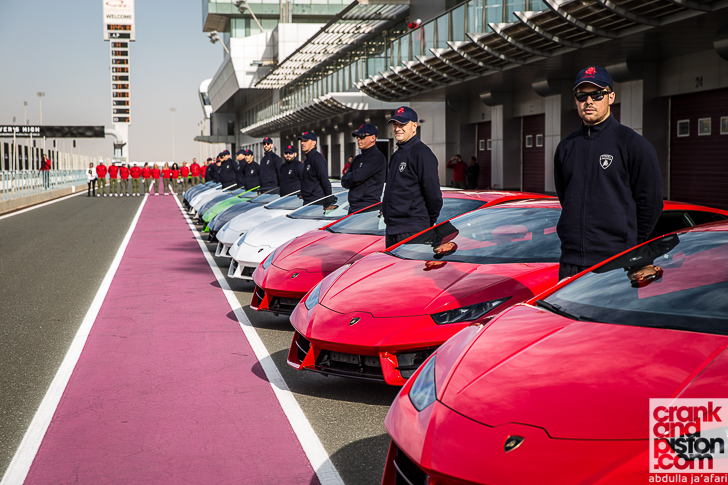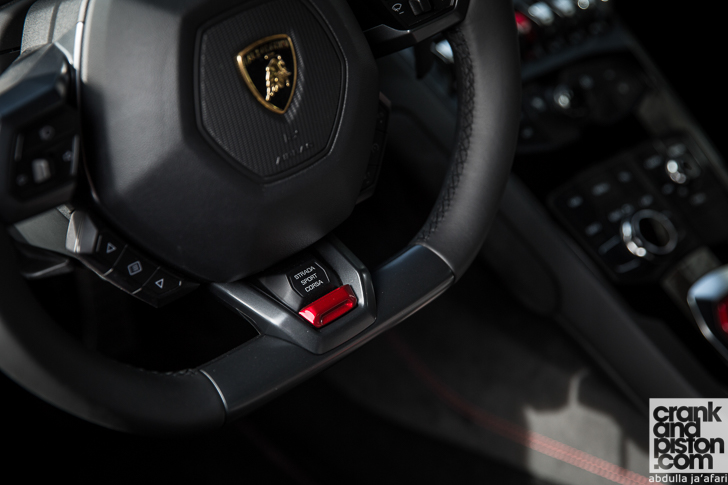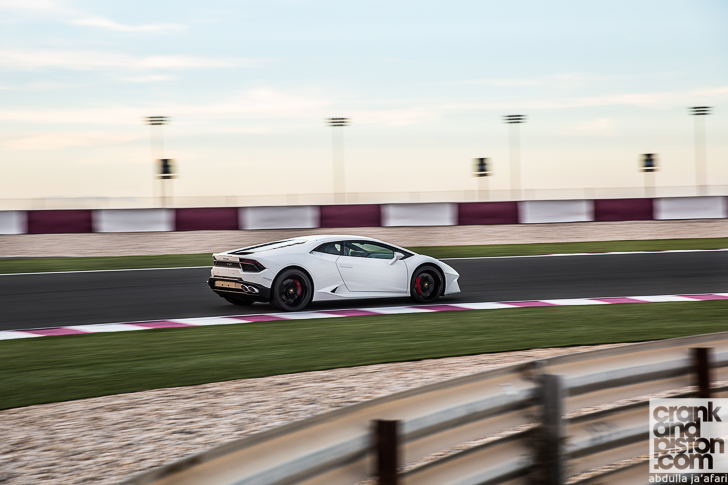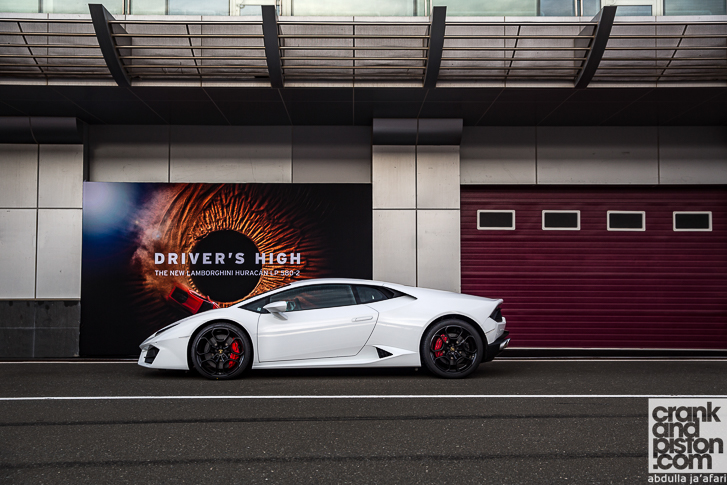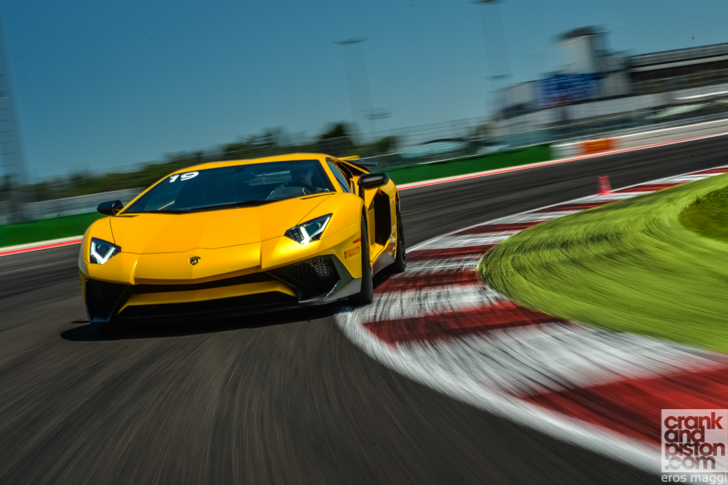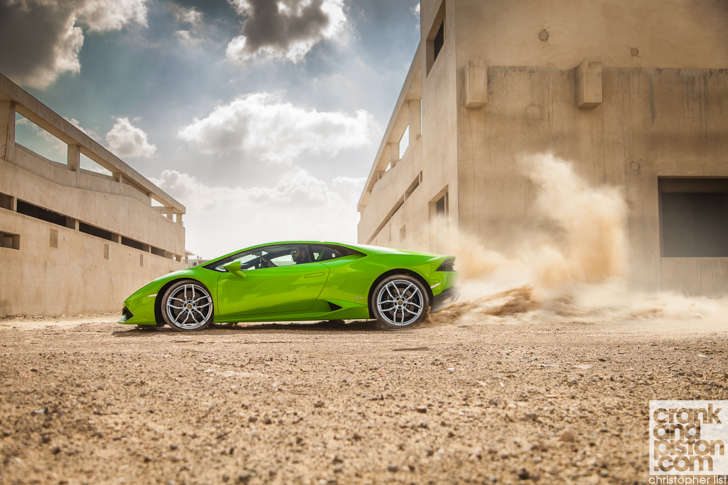Has Lamborghini injected a little more spark into its entry level model? crankandpiston finds out during the international launch drive in Qatar
| Engine | Power | Torque | 0-100kph | Top speed | Weight | Basic price |
|---|---|---|---|---|---|---|
| V10, 5204cc | 572bhp @ 8,000rpm | 397lb ft @ 6,500rpm | 3.4secs | 320kph | 1389kg (412bhp/ton) | $234,500 |
| More precise and engaging to drive than the all-wheel drive model | |
| Gearbox downshifts a little slow |
Quite honestly I didn’t enjoy driving Lamborghini’s all-wheel drive Huracán LP610-4 as much as I thought I would. Certainly the speed was there and the customary insanity that comes with that raging bull badge was plain to see, but still the LP610-4 lacked a certain precision on the limit, and had a tendency to understeer when the corners were really attacked.
That, I thought, was it then for the Huracán, but when Lamborghini unveiled a rear-wheel drive version that promised greater precision and ‘enhanced driving emotion’, I was ready to be proven wrong, particularly after we were invited to Qatar’s Losail Circuit for the international launch drive.
Visually, there aren’t many differences between the all-wheel drive LP610-4 and the new LP580-2…
They both have the same muscular and planted Italian supercar look, but with re-designed air inlets at the front. The rear meanwhile has a slightly thicker exiting air vent and a redesigned diffuser, and the bumper has received a few nip and tucks. Chances are if you’re sweet on the Huracán’s looks then you’ll have little to complain about with the new LP580-2, although those miniscule changes do add a cool ‘guess if I’m the LP580’ kind of style I personally find more appealing: Lamborghini even decided against putting the LP580-2 emblems down the sides. The interior is pretty much identical, and the Huracán LP580-2 also uses the same naturally aspirated V10 as its all-wheel drive alter-ego, but slightly detuned to produce 572bhp. 0-100kph is now taken care of two-tenths of a second slower than the LP610-4 – at 3.4 seconds – but the top speed is still a sizeable 320kph.
The main difference between the two models though was made clear during a brief chat with Lamborghini’s director of Development and Research Maurizio Reggiani. When removing the front axles, differential and driveshaft, the weight has not been compensated at the front, and the amended weight distribution (60% rear – 40% front) means the LP580-2 leans more towards oversteer than the all-wheel drive model. So, will the car be constantly drifting? I hope so, but then again, I’d like to see that rear-wheel drive cornering precision, so perhaps not.
Getting ready to hit the Losail MotoGP circuit, there are three different modes to play around with…
Strada (the friendly one), Sport (the fun/oversteer mode), and Corsa (speeeeed). Not wishing to put $175,000 worth of raging bull into the crash barriers, I opt for the friendly one for my first run. Cruising at medium-to-high speeds in Strada, the tamed bull feels surprisingly soft – for a supercar at least – both through the seat and the steering wheel. It’s the least performance-focused setting, true, and Lamborghini considers understeer rather than oversteer safer for drivers. Still, I’m almost starting to wonder if my trip to Qatar has been worth it. With limited time on-track to work with though and with ‘Strada’ mode (sort of) exhaustively tested, I waste little time selecting ‘Corsa’. And oh my, how different an experience this suddenly becomes.
First thing I notice is the louder exhaust tone, the brilliant V10 suddenly much more enthusiastic to get its peak power at 8000rpm. The suspension has also stiffened and more weight has been fed into the power steering, a change immediately bringing with it much greater feel for what the front tyres are doing. Suddenly I’ve been given more confidence to push the LP580-2 through the corners, my lack of faith in the front end eliminated thanks to much better traction out of the corners, a by-product of those grippy wide and low-profile 305/30 P-Zeros and re-calibrated dampers.
How does it drive?
With more precision up front to work with, feathering the throttle allows me to keep the back-end balanced whilst still leaning heavily on those front wheels, the V10 exploding in typical Lamborghini fashion as I hit the straights. One thing that does surprise me is the seven-speed dual clutch automatic transmission: shifts may have been crisp, but I had expected the downshifting response to be faster. Of course the big question is, has Lamborghini added ‘enhanced driving emotion’ as promised with a more oveersteer-y rear end? It’s difficult to say, given that we were asked – several times – to leave the traction control on during our run. Hit the corner at pace and immense stopping power from the carbon ceramic brake will get the back end wagging, though it’s not too long before the electronics dive in and the stability control brings them back into line.
So, what’s the verdict then?
Renewed precision – now that the front wheels can concentrate solely on steering – and more than sizable punch from that V10 mean the Huracán has been given a new lease on life. With understeer issues that blighted the four-wheel drive model now gone and a greater deal of adjustability, the whole package is now beautifully balanced and offers a more intuitive – and, quite frankly, more fun – drive as a result.
Rather than just making a statement as a Lamborghini, the LP580-2 encourages you to push its limits further (even if the instructors in Losail do not). And when you consider the $32K drop in price over the all-wheel drive LP610-4, you really do start to believe that less really is more.
Technical specifications available on page 2

